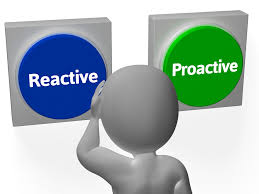In the realm of decision-making and problem-solving, two fundamental strategies govern our actions: proactive and reactive approaches. These approaches serve as guiding principles across various domains, including business management, personal development, and even daily life. Understanding the disparities between proactive and reactive methodologies is crucial for navigating challenges effectively and achieving desired outcomes. In this comprehensive exploration, we delve into the essence of proactive and reactive approaches, examining their distinct characteristics, advantages, and limitations.
Defining Proactive and Reactive Approaches:
To grasp the disparities between proactive and reactive approaches, it’s imperative to first define each concept succinctly:
Proactive Approach:
A proactive approach involves anticipating potential challenges, opportunities, or changes and taking preemptive measures to address or capitalize on them before they occur. It emphasizes foresight, planning, and initiative to shape outcomes in a desired direction.
Reactive Approach:
Contrary to a proactive approach, a reactive approach entails responding to events, situations, or problems after they have arisen. It involves addressing issues as they occur, often without prior planning or anticipation, in an attempt to mitigate their impact or find solutions.
Distinguishing Characteristics:
Timing:
Proactive Approach: Proactive actions are taken before an event or issue arises, focusing on prevention rather than reaction.
Reactive Approach: Reactive actions occur in response to an event or issue that has already transpired, emphasizing response and resolution.
Mindset:
Proactive Approach: Proactive individuals or organizations exhibit a forward-thinking mindset, seeking to identify and capitalize on opportunities while minimizing risks.
Reactive Approach: Reactive individuals or organizations tend to adopt a responsive mindset, dealing with problems as they arise without necessarily considering long-term implications.
Control:
Proactive Approach: Proactive strategies afford a greater sense of control over circumstances, as they involve deliberate planning and preparation.
Reactive Approach: Reactive strategies may offer less control, as they often involve improvisation and ad hoc responses to unforeseen events.
Resource Allocation:
Proactive Approach: Proactive measures may require upfront investment of time, effort, and resources in anticipation of future scenarios.
Reactive Approach: Reactive responses may demand immediate allocation of resources to address urgent issues, potentially leading to inefficiencies or higher costs.
Advantages and Limitations:
Proactive Approach:
Advantages:
Prevention of Issues: Proactive measures can prevent potential problems from occurring or escalating, saving time and resources in the long run.
Opportunity Maximization: By anticipating future trends or opportunities, proactive individuals or organizations can position themselves advantageously in competitive environments.
Long-Term Vision: Proactive approaches encourage long-term planning and strategic thinking, fostering resilience and sustainability.
Limitations:
Resource Intensiveness: Proactive measures may require significant upfront investment of resources without immediate returns, posing financial or time constraints.
Uncertainty: Despite foresight and planning, proactive approaches cannot anticipate every possible scenario, leaving room for unforeseen challenges.
Resistance to Change: Implementing proactive measures may encounter resistance from individuals or systems accustomed to reactive modes of operation.
Reactive Approach:
Advantages:
Immediate Response: Reactive approaches enable prompt resolution of urgent issues or crises, minimizing immediate damage or disruption.
Flexibility: Reacting to events as they unfold allows for adaptive responses tailored to specific circumstances, fostering agility and improvisation.
Resource Conservation: Reactive responses may require fewer resources upfront, as they are triggered by specific events rather than proactive anticipation.
Limitations:
Short-Term Focus: Reactive strategies often prioritize short-term solutions over long-term considerations, potentially neglecting underlying systemic issues.
Vulnerability to Impact: Reactive responses may be less effective in preventing or mitigating the impact of unforeseen events, leading to greater risks or losses.
Stress and Burnout: Constantly reacting to crises or emergencies can lead to heightened stress levels and burnout among individuals or teams.
conclusion,
the disparities between proactive and reactive approaches lie at the core of effective decision-making and problem-solving strategies. While proactive approaches emphasize foresight, planning, and prevention, reactive approaches prioritize response, adaptability, and resource conservation. Both approaches have their respective advantages and limitations, and their suitability depends on the nature of the situation, the level of uncertainty involved, and the desired outcomes.
Ultimately, mastering the art of balancing proactive and reactive strategies is essential for individuals and organizations striving for resilience, innovation, and success in an ever-evolving world. By understanding the nuances of each approach and leveraging them judiciously, we can navigate complexities with confidence and achieve our goals with greater efficacy.